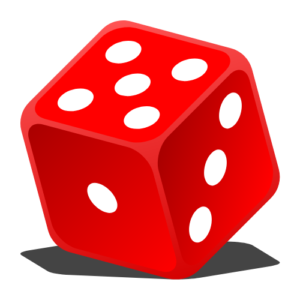Probability GCSE Questions, Step-by-step Examples & Worksheet
Probability
- It is the core of many areas including mathematics, statistics, economics and science.
- Probability helps people make apprised choices in situations of uncertainty.
- This comprehensive guide is intended to demystify the baffling nature of probability, not only for novice learners, but also for those who wish to master the subject.
In this article, we will discuss:
- What is Probability?
- What is Probability Distribution
- How do I Find Missing Probabilities?
Here is one more link to practice a few extra questions: Maths Genie Probability Questions
What is Probability?
- Probability is the very expression of uncertainty, and it uses systematic methods to measure the chances of events.
Through valuating outcomes with numerical values, probability helps one objectively analyze as well as predict.
- The illustrations through real-life situations like weather forecasting and sports analytics, provide a glimpse of the practicality of probability.
Describe Probability
- The difference between theoretical and experimental probability explains the dual nature of probability assessment.
Theoretical knowledge gives the foundation for getting into more complicated topics, whereas experimental jobs ensure the correctness of the theory.
- Concrete examples and graphics, namely probability trees and diagrams, contribute to the student’s clear understanding and application.
Probability Distribution
- Probability distributions become schemes for perceiving random variable characteristics.
Every distribution having its own character and parameters that control shape and its properties.
Illustrative examples, such as probability density functions and cumulative distribution functions, serve to show the applicability and utility of probability distributions.
Estimate of Probability
Probability estimation requires a synthetic mix of intuition, data analysis, and domain knowledge.
Methods like Bayesian inference and the Monte Carlo simulations are systematic procedures of probabilistic estimation.
Working case studies and practice scenarios highlight practical applications of probabilistic modeling in different environments.
Probability Calculation
- The step-by-step exposition of probability calculation explains the principles and methods at the base of the procedure.
The concept of the sample space and the event space are the focus making a base simple for higher topics.
There are all kinds of training materials from the basic to the intermediate level that will help solidify your understanding and mastery of probability calculation techniques.
Solved Example 1: Single Event
Question 1: What is the likelihood of rolling prime number on a fair six-sided die?

Solution:
- Step #1: Make a die with prime numbers on it (2, 3, 5).
- Step #2: Decide on die’s number of sides that is six.
P(Prime number) = 3/6
= 0.5.
Solved Example 2: Compound Event
Question 2: The bag contains 3 red and 2 blue balls. What is the probability of selecting a red ball and then a blue ball without replacement?
Solution:
- Step #1: Compute the probability of getting a red ball: P(Red) = 3/5.
- Step #2: Work out the chances of drawing a blue ball after having red:
P(Blue after Red) = 2/4.
P(Red and then Blue) = P(Red) x P(Blue after Red)
= (3/5) x (2/4)
= 3/10.
Where Can I Find Missing Probabilities?
- Complementary Probability: Manipulating the rule of the complement allows simplifying probability calculations through the exploiting of symmetry and the complementarity of events.
Examples of various problems that can be solved by the application of complementary probability enables the readers to enrich their knowledge and enhance their problem solving skills.
Definitions and Rules
- Visualizing the basics, like the addition and multiplication rules, teaches us how to approach complicated probability situations.
Theoretical notions are well-grounded with illustrative examples and interactive exercises. As a result, you will appreciate the elegance and power of probability theory.
Conclusion
- Finally, probability stands as a powerful means to confront with unpredictability and take informed decisions.
Regular drill, along with strong grasp of probability concepts, will make people more self-confident and skillful when they are facing the problems.
Even though we are in the desert of uncertainty, the probability shall be our torchlight showing us the way to the revelation and insight.
Frequently Asked Questions
Probability is used widely in a lot of things around us; it can be seen in weather forecasts and making financial decisions. For example, this helps in establishing the possibilities of rain on that particular day, the risk involved with an investment, and the chances of winning in a match of luck.
Theoretical Probability: This kind of probability is based on the mathematical calculations as well as the equality assumption of outcomes. It goes from theoretical models and formulas.
Experimental Probability: Practical experiments or observations, as the basic tools of experimental probability, lead to its determination. This technique entails collecting information from actual events or experiments and determining the probabilities of favorable results according to the occurrence of these events.
- Punctual practice involving many probability problems is meant to consolidate understanding and improve accuracy.
- Maintain a deep understanding of the original ideas as sample space, event probability, and probability rules.
- Make the use of resources like books and online platforms to get a variety of probability questions and their solutions.
- Obtain comments about your solutions, point out errors, and explain their essence to enhance your precision.
- Concentrate on applying probability theory in everyday situations to expand your knowledge and develop ability to apply probability principles in practice.
- Cooperate with the classmates, go for study groups and engage in discussions to be able to share ideas and to gain insights from others.
